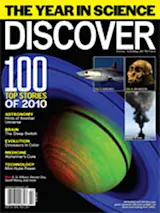Encased in ice for 4,000 years, a clump of prehistoric human hair gave up its secrets to the University of Copenhagen’s Eske Willerslev, the first researcher to sequence an ancient human genome. The hair, dug up in 1986 in Qeqertasussuk, Greenland, revealed that its owner was a male with brown eyes, thick brown hair, dry earwax, and shovel-shaped incisors. He was also prone to early baldness, according to an analysis published in Nature last February.
“Hair is the best material for genomics,” Willerslev says. It contains less DNA than other sources, but it is not porous or easily contaminated. His sequencing yielded about 80 percent of the genome. Most significantly, analysis of the hair revealed that its owner was closely related to the Chukchi people, who live at the eastern tip of Siberia today, suggesting his ancestors traveled to the New World independent of the migrations that gave rise to ...














